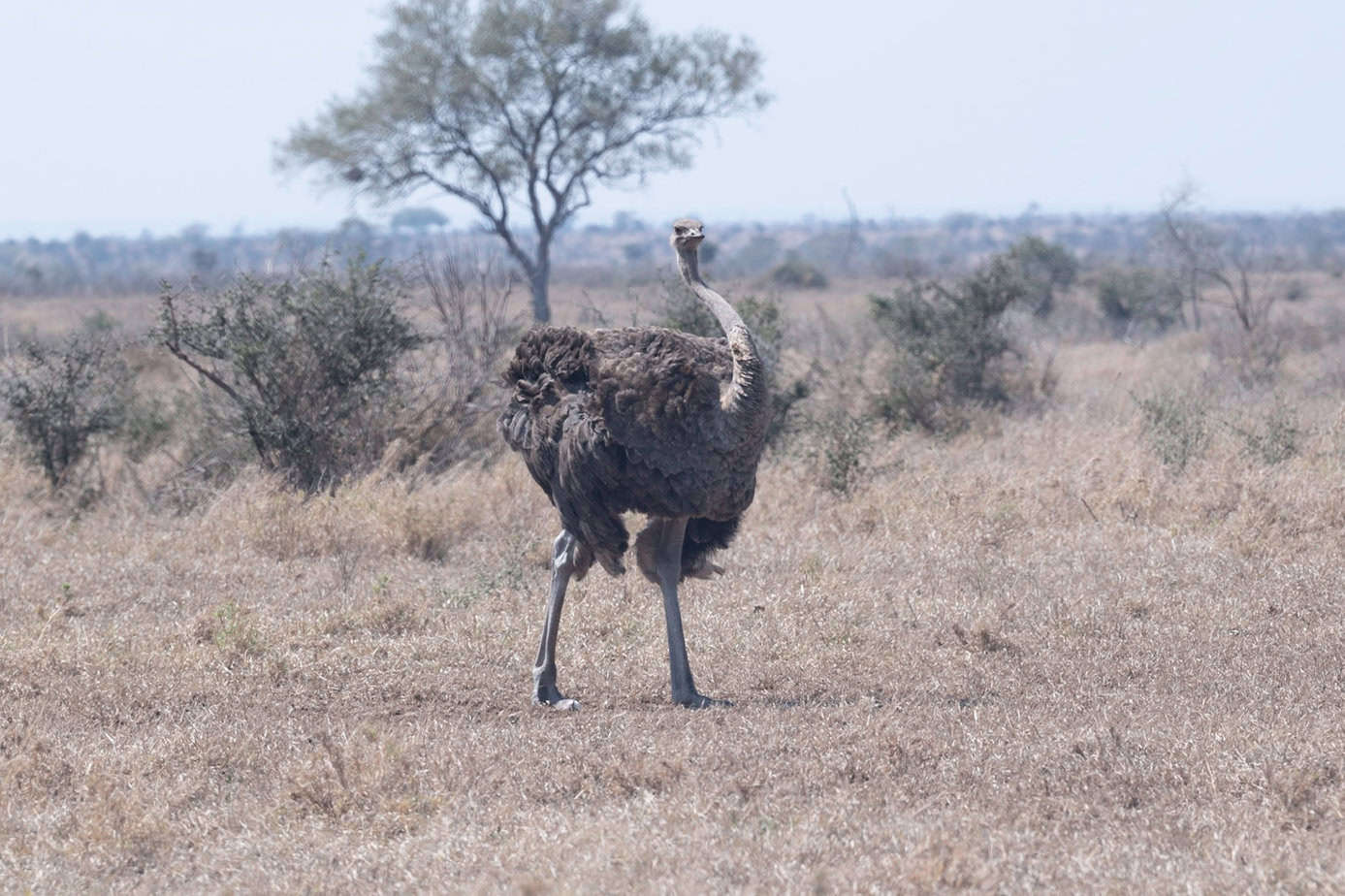Kruger National Park Itinerary
Kruger National Park is massive. It’s easy to get overwhelmed by the options as soon as you start looking at planning your self-driving itinerary. You’ll have to decide where you want to stay, but I’ve planned two trips to Kruger. One was canceled due to the pandemic, so I got a second chance at planning. I changed some things on the second attempt and still wish I’d done a few things differently.
So, this is the Kruger National Park itinerary I wish I’d planned. Plus, the details about why, how to plan, and some tips. The post is everything I wish I’d known when I planned my itinerary.
Some of the links on the page are affiliate links. If you choose to purchase from one of the links, I earn money at no extra cost to you. I’ll only recommend brands I’ve used and love (or an alternative I would book myself). As an Amazon Associate, I earn from qualifying purchases. I always pay for my own travel. I’ll be sure to let you know if that ever changes. If you choose to click through and purchase – thanks so much for the support!
Kruger National Park Itinerary Overview
Day 1- Land in Kruger Mbombela Airport and stay in Berg-en-Dal
Day 2– Berg-en-Dal – Explore the southern part of the park
Day 3- Drive Berg-en-Dal to Lower Sabie
Day 4- Lower Sabie – Explore the area of the park. Be on the lookout for elephants.
Day 5- Drive Lower Sabie to Satara- Explore the Satara area.
Day 6- Satara – Explore the area of the park known for cats. Look for lions, leopards, and cheetahs.
Day 7– Skukuza
Day 8- Fly Home
Links for Things I Recommend
- Rent a car for your trip -I recommend a small SUV.
- Drive times in the park – Don’t trust your GPS.
- Rest camps in Kruger
- Tours and activities with Kruger Park Officials
- Tour options if you’ve decided you don’t want to self-plan this one.
Getting to Kruger National Park
Kruger National Park is northwest of Johannesburg. There are a few ways you can get there.
Drive from Johannesburg
You can rent a car in Johannesburg and drive to the park. The drive is about 4 hours and would take more or less one whole day. It is a fairly straightforward drive.
Honestly, there just wasn’t enough time in my schedule for this to make sense. So, flying was the best option for me and is the most popular option for tourists.
Fly to Kruger
Kruger is very well-connected to the rest of the country. There are several airports nearby.
For my itinerary, there are two options for airports; Skukuza or Kruger Mpumalanga International Airport. Both of these airports receive flights from Johannesburg and Cape Town.
Skukuza airport is actually in Kruger National Park. The flights here are a bit smaller, but even if you arrive late, you’re already in the park, which is nice.
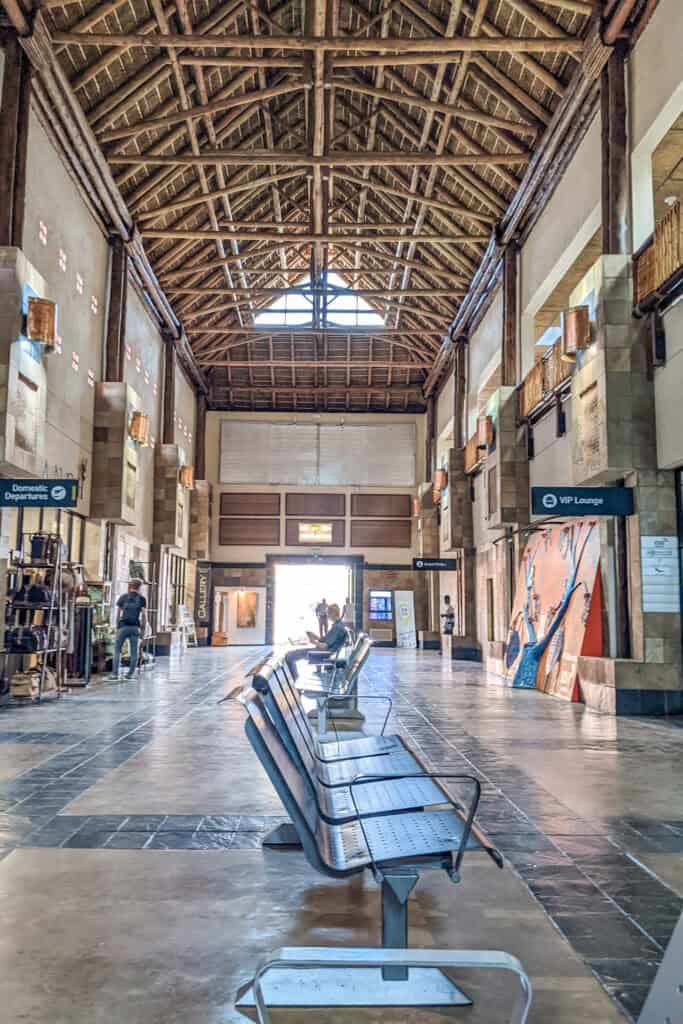
Kruger Mpumalanga Airport is in Mpumalanga/Nelspruit and is still very close to the park. You’ll need to make sure you have time to get to your camp in the park from the airport. If not, you’ll need to stay in the city before you can go in.
However, the airport is bigger, so there are more flight options. This is a popular choice for many travelers.
If you need a place to stay in Nelspruit, I stayed here and loved it. An international couple runs it, and it was the perfect place to kick off time in South Africa.
Renting a Car for your Kruger National Park Itinerary
You can rent a car in Skukuza or at Kruger Mpumalanga Airport. The car rentals outside the park were slightly cheaper, but both were reasonable.
One thing to consider when renting your car is to try to rent something that sits up a bit more than a basic car. I rented a mid-size car. It was sufficient, and I had no issues renting or driving the car. But there are areas of the park where the grass is tall, and I couldn’t see over it from my vehicle.
You don’t need a massive vehicle or four-wheel drive, but a small SUV would be nice so you can see animals in tall grass better than I did.
I have more general tips for a self-driving safari through Kruger here.
Day 1- Berg-en-Dal
Berg-en-Dal is one of the southernmost camps in the park. For some reason, I never found much information about it, so I didn’t stay here, but I wish I had.
Berg-en-Dal is also very close to the Malelane Gate, the closest gate to Nelspruit. So, it’s a convenient first stop. If you fly into Skukuza, you could also stay there instead since the two are relatively close.
The area around Berg-en-Dal is the best place to see a rhinoceros in the park. But, due to poachers you won’t see any rhino sightings marked on the map. The best way to see them is to spend some time in the area driving around and hoping you get lucky.
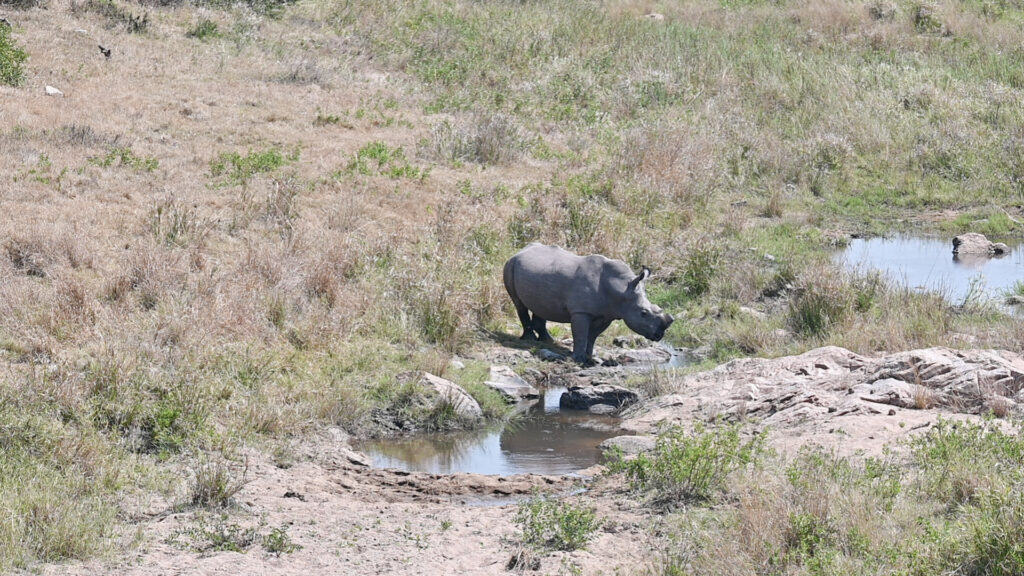
I had to drive for hours to see a rhino and got lucky. But if I had it to do again, I’d stay here. Every local I met on my trip had stayed in Berg-en-Dal.
Lodging Tips- Berg-en-Dal
Berg-En-Dal is also one of the newer rest camps in the park, which is nice. The bungalows have a kitchenette and a bathroom. There are also campsites and larger guesthouses here. Use the SANParks website to book your accommodation. If you book early, request a bungalow near the dam to see animals if they come in for a drink.
Day 2- Berg-en-Dal
The area around Beg-en-Dal is more rocky and dry than other parts of the park. Planning walks or drives in different areas of the park is a good idea so you can see many different landscapes.
The mountainous region of Berg-en-Dal would be a good place for a bushwalk. You can sign up for this after you have booked your lodging through the park. A night game drive on the day you arrive would be fun, too, if you can handle the jet lag.
If you don’t choose to do an activity here, go on a morning and evening game drive.
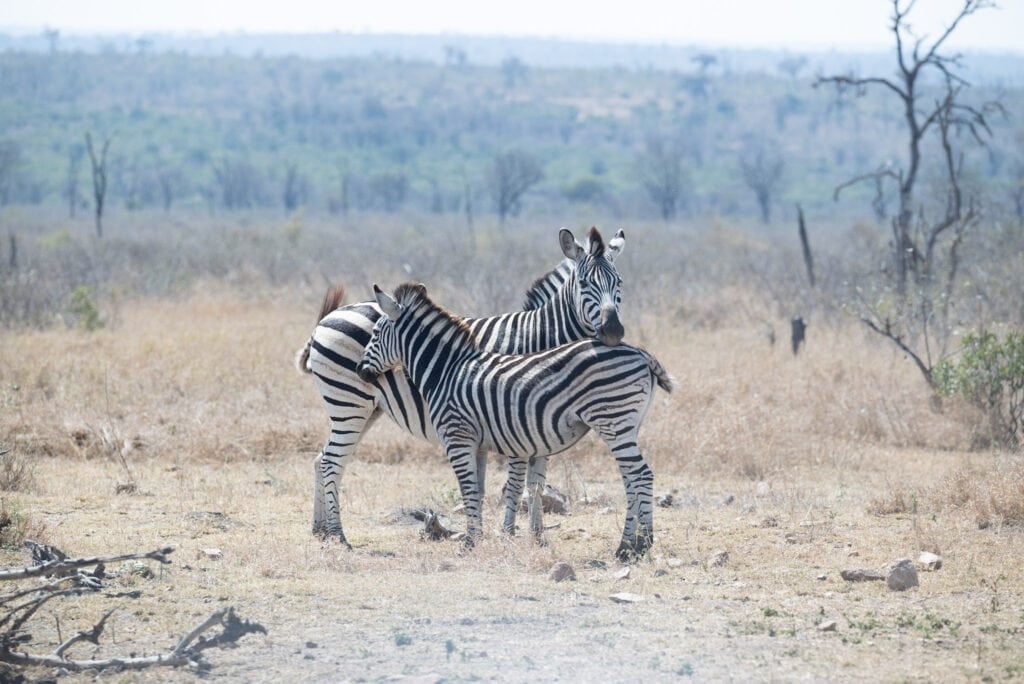
Consider driving from Berg-en-Dal to Crocodile Bridge and back. Another good option is to drive to Skukuza and back.
Day 3- Lower Sabie
Drive from Berg-en-Dal to Lower Sabie. The drive is 113 km and will take around 2.5 hours.
If you need more time in the area, you can do an early morning game drive before you check out. But it’s also an option to check out and then drive straight to Lower Sabie.
The area around Lower Sabie has an abundance of diverse wildlife. Look for elephants, hippos, lions, leopards, and more.
Plan to drive the highway along the Sabie River. But if you can get off the paved roads and onto the gravel roads, you may see more wildlife.

Lodging Tips- Lower Sabie
Lower Sabie is a camp along the river. Tents have excellent views of the river. The tent isn’t really a tent, but it didn’t feel much different from the bungalows at the other camps.
Booking early and emailing to request specific tents was one of the best tips I dug up in my research. I had a view of the river from my porch. I was able to watch a family of elephants eating and playing while I ate my dinner one night. This was my favorite stay of my entire time in Kruger.
Use the SANParks website to book, and look at the map to see the lodging along the river. I stayed in tent number 27. The view is in the photos.
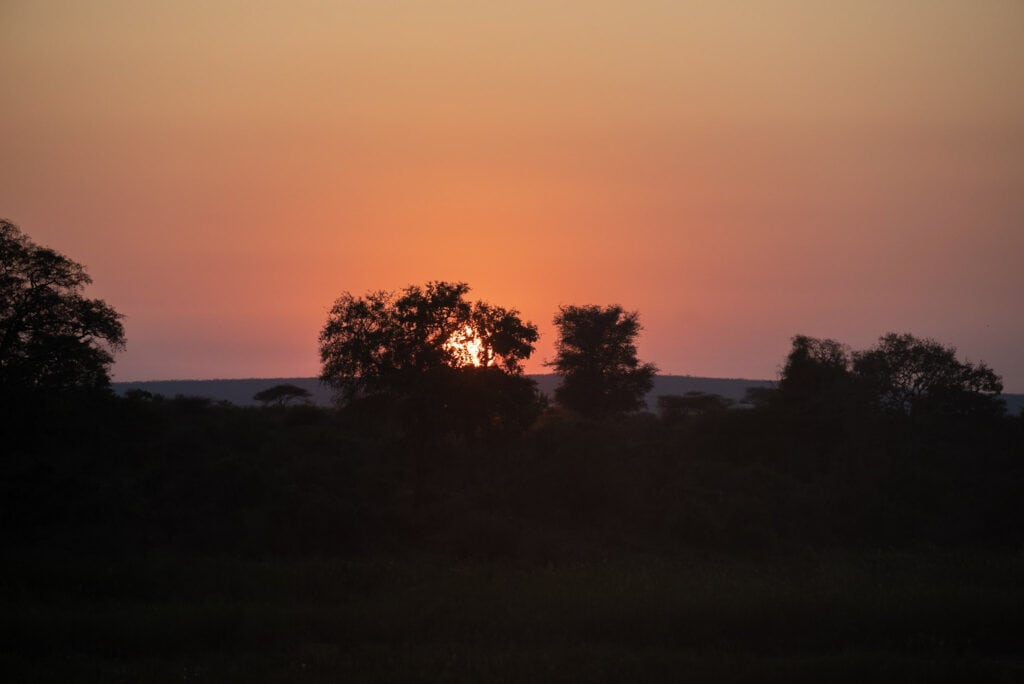
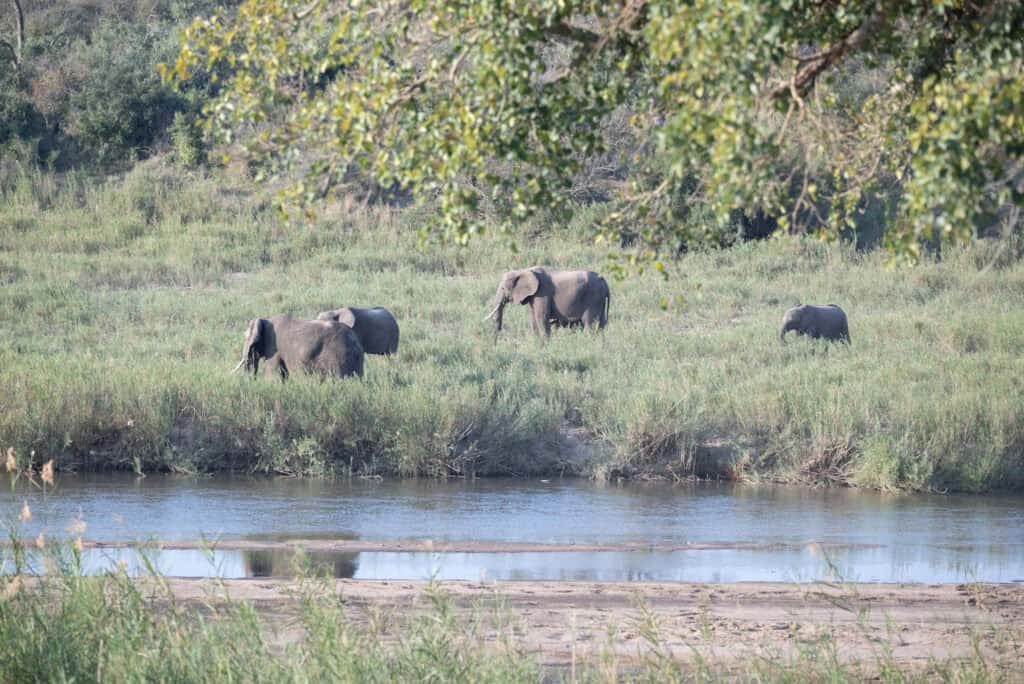
Day 4- Lower Sabie
Take a drive in the morning as soon as the gates open. You can look at the animal sightings board to help you decide where to go. But, the Mlondozi loop is a popular option. There is a picnic area at Mlondozi, so you can stretch your legs and get a snack.
You may also see some animals coming in to get a drink at the lake.
Come back to camp for lunch and a snack, or drive toward Skukuza to eat lunch there. In the afternoon, you can continue exploring the Mlondozi loop if you had luck there before, or you can explore the other roads in the area.
I enjoyed watching the sunset from the porch of my tent in Lower Sabie.
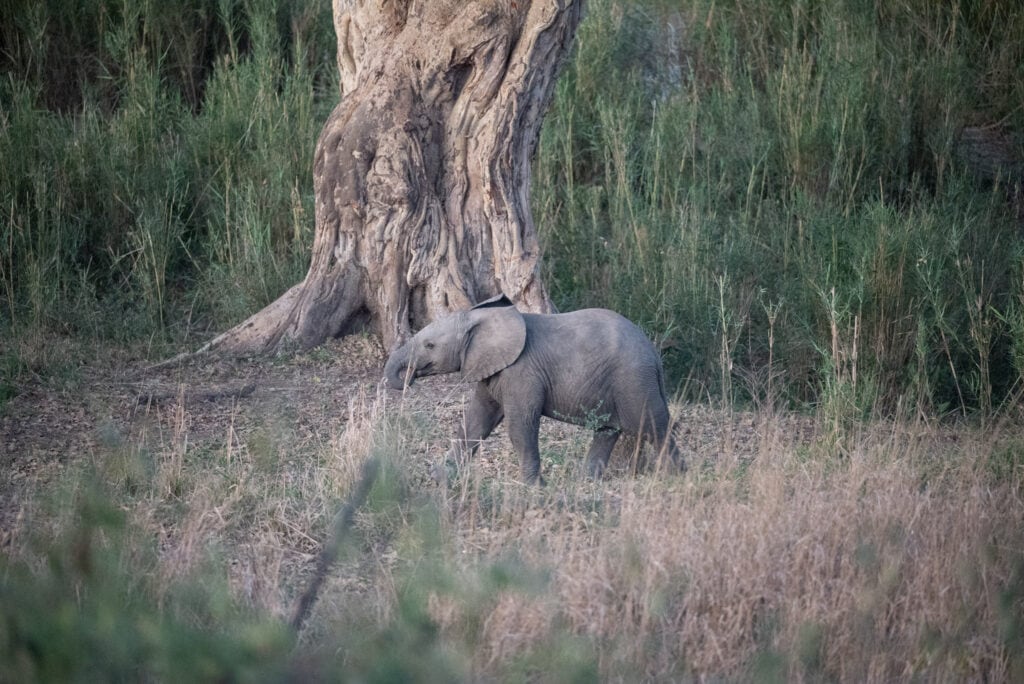
Day 5- Satara
Drive from Lower Sabie to Satara. As you get to Satara, the landscape changes to tall grasses, which cheetahs love.
The area around Satara is one of the best places to spot big cats in Kruger. You’ll find yourself driving and re-driving the roads in this area, hoping to spot a lion or cheetah.
I’m not a safari guide, but these are the tips I learned:
- The cheetahs like the tall grasses, but if they lay down, they disappear. Unlike most cats, Cheetahs hunt during the day. Spend time looking for them during the day instead of near dawn and dusk.
- The lions will likely be lying in the shade in the middle of the afternoon.
- Look for leopards near the river. During the day, they like to lie in the trees, and you can sometimes spot them lounging on the branches near the water.
Especially in this part of the park, pay attention to where the big traffic jams are and use the animal sightings board to help you decide where to drive next.

Consider doing a game drive while you’re staying in Satara. With the exception of cheetahs, the cats are more active in the mornings and evenings. Since you aren’t allowed to be on the road as late, you may have a better chance of seeing something new on a game drive.
Lodging Tips- Lower Sabie
The bungalows at Lower Sabie are arranged in circles. This one was harder to navigate for me, so I’d recommend arriving to check in when it’s still light out if you can.
The bungalows with a view look out into the grasslands, and you can potentially spot some animals or birds from your lodging.
Use SanParks to book and you can see the line of bungalows marked BD2V.
Day 6- Satara
Get out when the gates open for the best chance of animal viewing in Satara. The line to exit in the morning was longer here than at any other camp.
It moves quickly, and there is plenty to explore. On safari, first is nice, but it’s not the only option! Sometimes, the other cars can spot animals for you!
But, being early does give you the first try to get in a position to see animals. It’s worth something, but it’s not the end of the world if you’re not first in line at the gate.
Plan to drive the same roads as the day before. Use the boards to help you make your route choices.
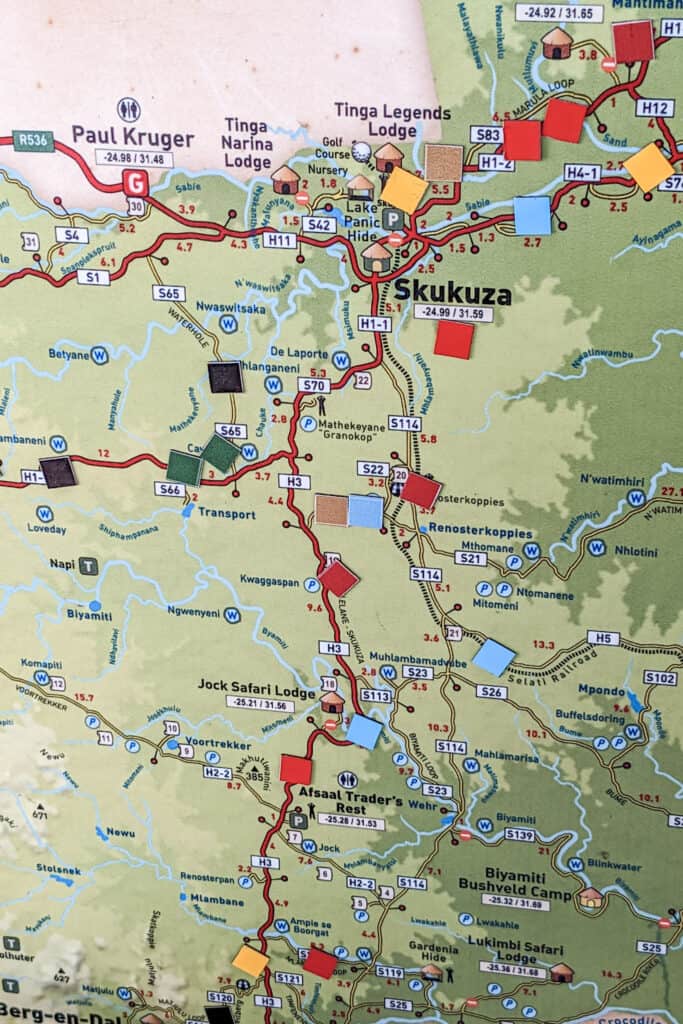
Day 7-Skukuza
Since Satara is too far from the gates for you to make it to the airport from here, you’ll need to move closer to the edge of the park.
Take a morning game drive, check out, and drive from Satara to Skukuza.
Explore the area around Skukuza in the afternoon.
Day 8- Fly Home
Get an early start so you can game drive as you drive from Skukuza to Nelspruit if you need to. Be sure to give plenty of time for this drive. You want to be able to stop and watch wildlife if you see something interesting!
Things to Consider When Choosing Rest Camps
There are 12 main rest camps and even more satellite and bush camps, so choosing can be impossible.
First, pay attention to the drive time between the camps. Don’t use your GPS. Use the guidelines from the park. Try not to plan more than a 3 or 4-hour drive. You’re in the car often, and driving too much can be exhausting. Plus, you don’t want to lose wildlife viewing time because you’re always driving from camp to camp.
Don’t be afraid to stay more than one night in popular areas. They’re popular for a reason. Wildlife viewing is abundant near Lower Sabie and Satara. Especially on your first trip, there’s no reason to try to be original or different. Especially here, the popular sites are popular for a reason.
Plan your itinerary early so you can book as soon as the calendar is open. Lodging in popular areas, especially those with more desirable views, can fill up quickly. If that matters to you, then you should plan to book your accommodations early.
If you know you want to do an activity, like a bushwalk, game drive, or mountain bike ride, be sure your booking allows it.
Booking Rest Camps and Activities
You’ll need to book your accomodations before you can book activities through the park. These don’t book out quite as quickly as the lodging does, but you’ll still want to get them lined up early.
Before moving on, some activities are fun, but don’t overbook yourself. I booked some activities because I was afraid I wouldn’t see animals.
In hindsight, that was silly. So, sprinkle in activities in moderation so you have time to explore on your own.
There are bushwalks where you walk around with an armed park ranger. I haven’t been able to do anything like this anywhere else, so I’d recommend going on at least one. You do need dark or neutral clothing for this, but sweatpants or jeans are fine. You don’t need to go in stereotypical safari gear or anything.
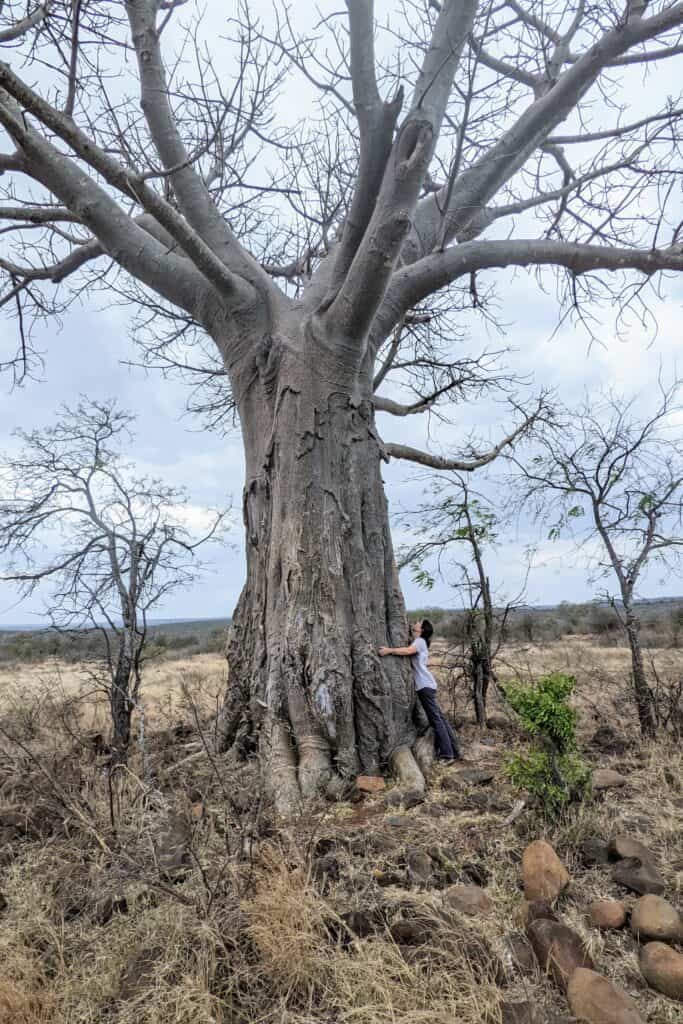
Game drives are offered in the mornings and evenings. They are great because they get you on the roads exploring after the gates have closed or before they open. Plus, the guides know how to spot animals! If you’ve never been on a safari before, this could be good to do at the beginning of your trip so you can learn some animal spotting tricks.
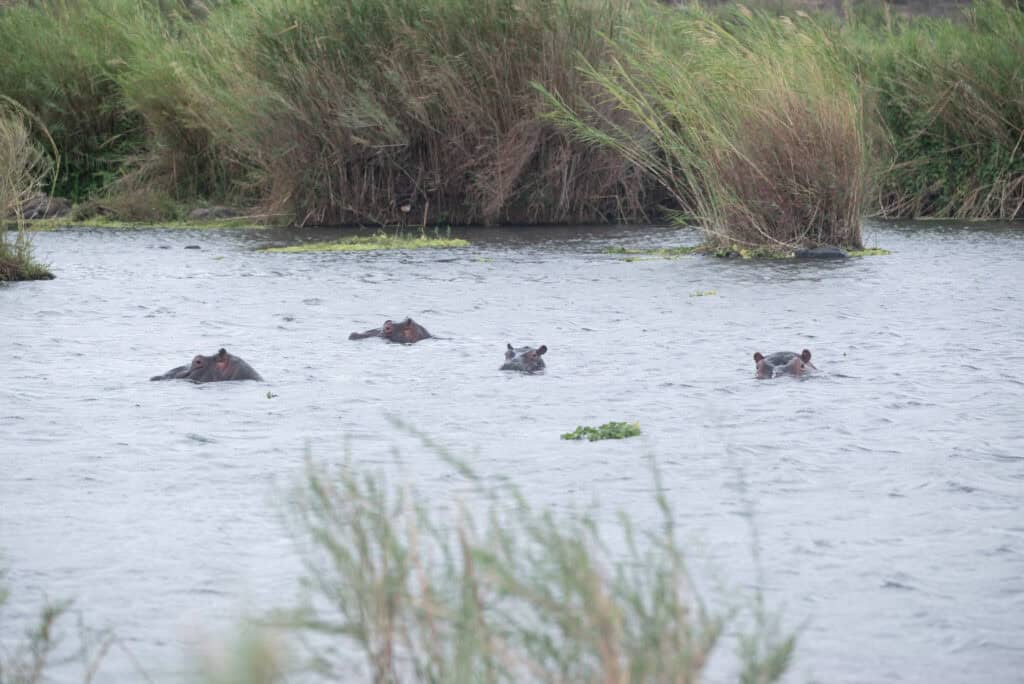
There are many other tours to choose from, so look through them. Just make sure you know how to work them with your lodging. For example, you can’t do a morning or evening game drive at a camp that you aren’t staying at.
Tips for a Great Self-Drive Safari
Animals can be difficult to spot. One thing I learned in Botswana is to look for movement.
Even if the animals blend in, if you think you see movement, it’s worth following your hunch and seeing what it is. It may be a rock or something really cool.
If there are many cars parked in one spot, that probably means there is something big there, typically a large cat or a rhino.
Purchase a park guide at your first rest camp or when you enter the gate. If you can find one with the animals illustrated in the back that’s what you want. You can use it to help you track what you’ve seen and identify animals and birds you aren’t familiar with.

Look at the sightings boards in each rest camp to help determine where to explore each day. These will show you where popular animals, other than rhinos, can be spotted. It’s also a good idea to talk with other travelers to see where they’ve had luck and share information with one another.
What to bring with you on Safari
A tentative plan but a lot of flexibility. Your driving plans may change based on where the animals are.
A good pair of binoculars. These Vortex binoculars are the ones I bring with me.
If you want great photos, you need a camera with a telephoto lens. This Nikon Z5 and this lens are my go-to for all of my safari photography.
Comfortable clothes since you’ll be in the car for most of each day.
You should bring a swimsuit if you plan to use the pools at some rest camps during the day when you’re not looking for animals.
Enjoy Planning your Kruger National Park Safari
Planning my own Kruger National Park itinerary is one of my favorite travel experiences. All of my safaris have been amazing but it was really fun doing it without a guide. It was fun to prove to myself that I could spot some animals. Plus, it was way cheaper than it would’ve been at one of the resorts!
Safaris are incredible! I hope you enjoy yours!
